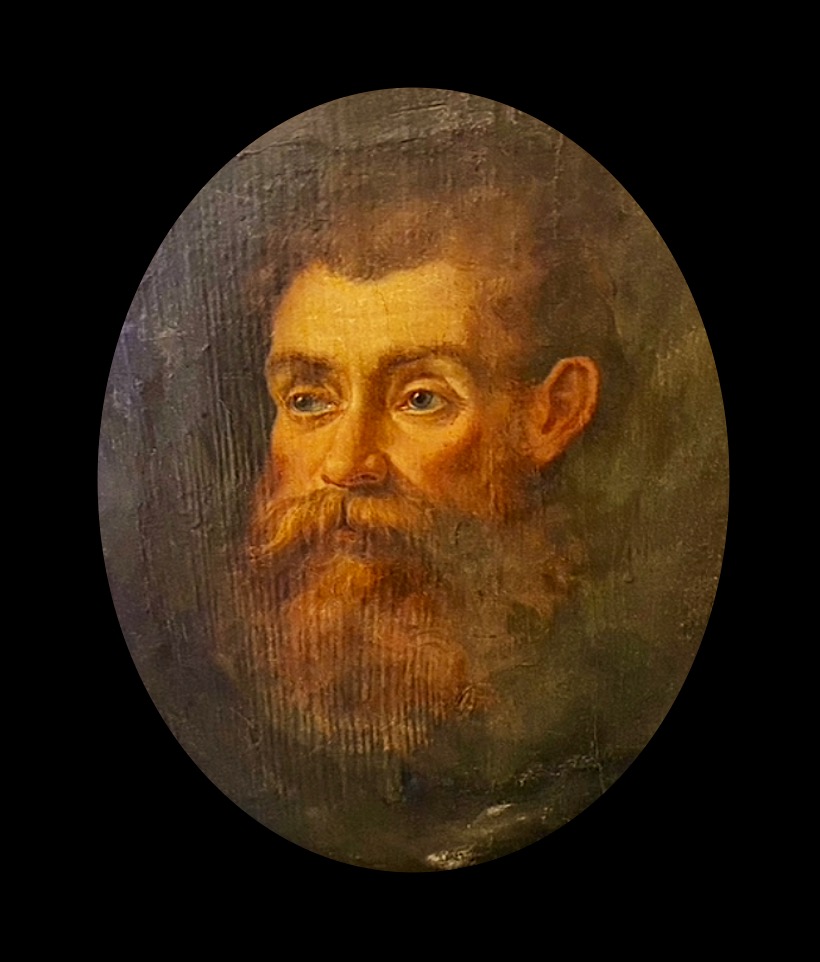

Title: 17th Century Antique Italian Oil Portrait Painting On Wood
Shipping: $29.00
Artist: N/A
Period: 17th Century
History: Renaissance Art
Origin: Southern Europe > Italy
Condition: Good
Item Date: N/A
Item ID: 465
A Spectacular 17th Century Antique Italian Oil Portrait Painting of a wise old man beautifully painted on wood. The 17th century was a period of great artistic achievement in Italy, particularly in the field of oil painting on wood. During this time, Italian artists produced a remarkable number of portraits, which were often commissioned by wealthy patrons and prominent families. One of the most famous Italian painters of the 17th century was Caravaggio, who revolutionized the art of portraiture with his use of dramatic lighting and realistic depictions of his subjects. His style was characterized by the use of strong contrasts between light and dark, known as chiaroscuro, which gave his paintings a striking sense of depth and three-dimensionality. Another notable painter of the 17th century was Annibale Carracci, who worked in a more classical style and was known for his skill in capturing the expressions and emotions of his subjects. His portraits often featured elegantly dressed men and women posed in naturalistic settings, creating a sense of intimacy and realism. Other prominent Italian painters of the 17th century include Guido Reni, whose work was noted for its graceful beauty and delicate coloration, and Giovanni Battista Tiepolo, who specialized in large-scale frescoes and decorative paintings. Throughout the 17th century, the popularity of oil painting on wood continued to grow, and Italian artists developed a variety of techniques for creating these works. One common method involved preparing the wood surface with a layer of gesso, a mixture of plaster and glue, before applying multiple layers of oil paint to achieve a rich, luminous effect. Today, antique Italian oil portrait paintings from the 17th century remain highly prized by collectors and art enthusiasts, and are considered some of the finest examples of European art from this period.
During the 17th century, many artists used oil paint on wood panels to create their artworks. The process involved several steps, including preparing the wood panel, applying a ground layer, sketching the composition, and then building up the image with layers of paint. To prepare the wood panel, the artist would begin by selecting a high-quality piece of wood, typically oak or poplar. They would then cut the wood to the desired size and shape, and then sand it down until it was smooth and even. Once the wood panel was prepared, the artist would apply a layer of gesso, which was made from a mixture of animal glue and white pigment. The gesso layer provided a smooth surface for the paint to adhere to and prevented the paint from sinking into the wood. Next, the artist would sketch the composition onto the panel using charcoal or a thin, dark paint. This step allowed the artist to work out the overall composition and make any necessary adjustments before applying the paint. Finally, the artist would begin applying the oil paint in thin layers, gradually building up the image and adding details as they went. The oil paint was made from pigments mixed with oil, usually linseed oil or walnut oil. As for who commissioned these portraits, it varied depending on the artist and the time period. In general, portraits were commissioned by wealthy individuals or families who wanted to document their status and accomplishments. These portraits were often displayed in prominent places in the home or in public spaces, such as government buildings or churches. Portrait painting was also a popular form of art among the aristocracy and royalty, who commissioned portraits of themselves and their families as a way to celebrate their power and influence. Many artists, such as Anthony van Dyck and Peter Paul Rubens, were highly sought after by the royal courts of Europe and produced numerous portraits of kings, queens, and other members of the nobility. Overall, the art of portrait painting during the 17th century was a complex and time-consuming process that required skill, patience, and attention to detail. However, the resulting artworks were highly valued and continue to be admired for their beauty and historical significance.